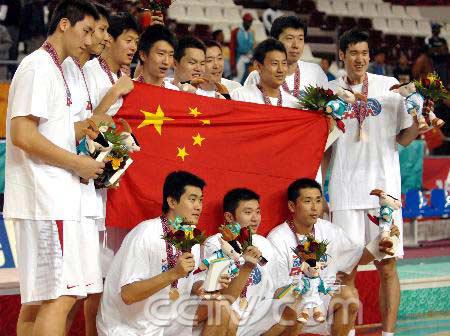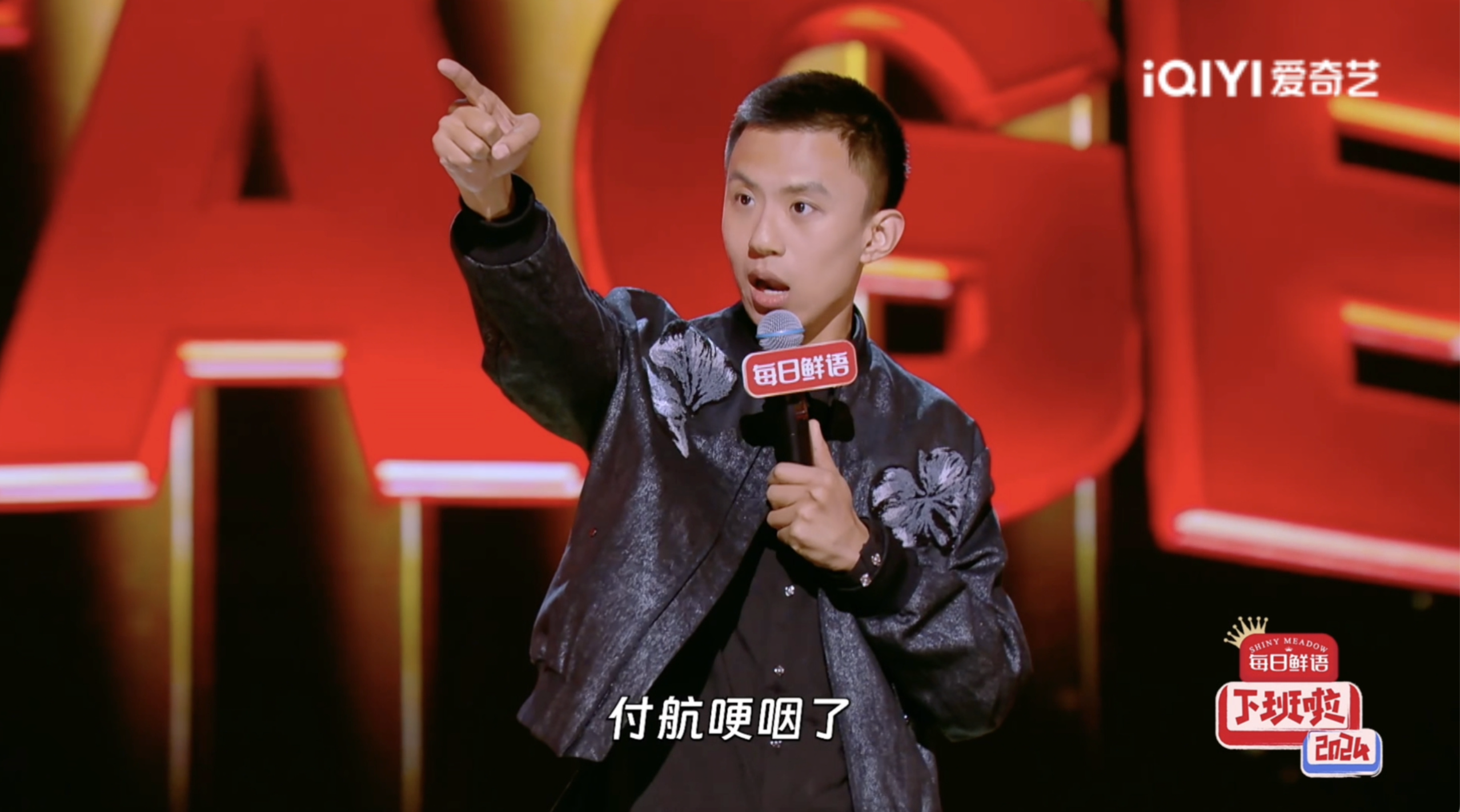() The Record Form of Investor Relations Activities was released on April 24, and the company was investigated by 21 institutions on April 23, 2023. The types of institutions are other, fund companies and securities companies. Introduction to the main contents of investor relations activities: 1. Speech by the Chairman: Good afternoon, investors. Thank you very much for attending the company’s performance briefing in 2022 and the first quarter of 2023. First of all, I’m sorry, but the overall performance of Haoshitong has a big deviation, which deviates from the expectations at the beginning of 2022. During the reporting period, the centralized procurement business of B2B office materials continued to focus on high-quality large customers such as central enterprises and banking financial institutions, and with the guarantee of high-quality refined services and enterprise digital platforms, the business needs of customers were deeply explored, the scale of reserve orders increased steadily, the development capacity of new B2B customers continued to increase, and the sales scale of core large customers continued to lead. With the continuous acceleration of digital centralized procurement, the company closely followed the digital development trend, continued to focus on the in-depth operation of the office centralized procurement industry, continued to strengthen its core business service capabilities, and the B2B business developed steadily. Based on the in-depth management of office administrative materials, the company strengthens the core business service capabilities of MRO and trade union welfare, and expands the service boundary of high value-added marketing materials. Due to the uncertainty of the external environment, the company pays attention to the steady management of cash flow and maintains reasonable growth. In 2023, Haoshitong Circuit will focus on the just-needed business scenarios and focus on the key breakthroughs of demanding customers. Finally, thank you for your trust and support. II. Introduction of the company’s operation in 2022 and the first quarter of 2023: In 2022, the company realized an operating income of 8.629 billion yuan and a net profit of 127 million yuan. In the first quarter of 2023, the company achieved operating income of 1.911 billion yuan and net profit of 44.55 million yuan. Third, the company’s future development prospects: 1. Industry trends Office centralized procurement: digital and e-commerce centralized procurement has become the main form of public resource transactions from central to local, and public procurement will gradually enter modular, scene-based, digital and ecological development. Brand Stationery: Great restructuring and changes are taking place in the industry. The growth of consumer demand in the domestic market comes more from consumption upgrading and product upgrading. The demand and quality are changing, and diversified content e-commerce channels are developing at a high speed. SaaS cloud video: the important content of digital new infrastructure of government enterprises and the main productivity tool to deal with uncertain factors in business production. Intelligent office, comprehensive collaboration, software localization and Internet security construction will become the key words of cloud video cloud office cloud collaborative development. 2. The overall development strategy adheres to the purpose of digital transformation and upgrading and customer service, and continues to focus on high-quality large customers, focusing on B2B administrative office materials, cloud video, MRO, employee welfare, marketing materials and other scenes, and creating a full-scene, full-production chain and intelligent enterprise service platform. Driven by data, we will constantly improve the architecture and functions of digital systems, explore new business models and fields, and build a digital ecosystem.To provide better one-stop purchasing experience and service for enterprise customers, and to digitally connect business activities, and strive to become a trustworthy enterprise-level full-scenario operation service provider. 3. Business segment development planning (1)B2B office materials centralized purchasing business company will focus on four categories of high-quality customers: central enterprises, central financial institutions, government and military, and rely on the national horizontal and vertical integrated marketing and technical service network to dare to invest in the deterministic business of B2B digital sunshine centralized purchasing and expand the scale advantage of centralized purchasing. The company builds a high value-added administrative office operation and maintenance material solution with the mode of self-support and platform, focuses on the development of MRO solutions around customer needs, and develops digital trade union welfare solutions and marketing material solutions. B2B e-commerce centralized purchasing will lock in five core competencies, namely, bid finalist capability, business acquiring capability, warehouse delivery capability, commodity supply chain capability and digital capability. (2) Brand new stationery focuses on core categories, continues to optimize and adjust product structure, customer structure and profit structure, and locks in five core competencies: channel diversification, product innovation, integration of production, supply and marketing, digitalization of information and brand emotionalization. Make full use of the advantages of digital centralized purchasing platform, gradually increase the product share of brand new stationery in B2B office centralized purchasing, and flexibly develop high-flow product categories according to the product needs of B2B customers. (3)SaaS cloud video continues to promote the development and implementation strategies of "cloud+terminal+industry" and "5G+ innovation+localization"; Continue to implement differentiated competition,Focus on large and medium-sized high-quality customers, focusing on industry scenes such as party, government, army, central state-owned enterprises and education; We will continue to improve the capabilities of audio and video underlying core algorithms and artificial intelligence fusion technology, increase investment in R&D and channels of Xinchuang and localized software and hardware, deepen the integrated application of PaaS and the underlying open capability of Xinchuang SDK, and improve the "SaaS+PaaS+AI" cloud video full-stack products and solutions. IV. Interactive Q&A session
Q: What is the progress of B2B customer structure adjustment? What is the expected growth rate of B2B business income this year?
A: The company has taken the initiative to adjust the customer structure for three consecutive years. By the end of this year, the adjustment has been basically completed. The company’s accounts receivable structure, account period and positive cash flow have all benefited from the company’s active adjustment of customer structure. From the perspective of the whole industry, the growth rate of B2B business income is relatively stable. At present, more than 50% of central enterprises have basically entered the field of centralized mining. With the customers of high-quality central enterprises further refining the centralized procurement category, it has given us new room for growth. From the perspective of enterprise growth, the company is still confident to maintain a high growth rate.
Q: Is Good Vision adjusting its progress at present? What is the company’s expectation for Good Vision this year?
A: In the past two years, it has been a transformation stage of Good Vision, and its performance has deviated greatly from expectations. This year, starting from the certainty of the development of Good Vision, we will reduce the cost of personnel and fixed costs. In the past two years, Haoshitong has invested heavily in product research and development. This year, Haoshitong does not need to invest heavily in research and development, and our products are still leading and mature in the industry. Good TV continues to focus on the direction of state-owned enterprises, government and education. In the direction of government and education, the overall budget matching is a slow process, and there are more business opportunities in these two areas. The reserves of the past will have a better output in future education and government this year. At present, in the direction of China’s central enterprises, China Unicom’s strategic investment has helped Haoshitong to serve the cloud video of the State Council SASAC. The future will also have a good impact on the development of state-owned enterprises. Recently, the projects of state-owned enterprises have also entered the bidding stage. This year, we expect to reduce losses and break even.
Q: What is the potential direction of AI?
A: Good Vision is deeply integrated with AI technology and cloud computing technology. In the research and development in the past two years, Haoshitong has focused more on the direction of Xinchuang, meeting the need to have AI ability to enter teaching scenes and medical scenes in Xinchuang environment to meet personalized applications. At the same time, Haoshitong also combines AI capabilities with cloud capabilities, and conducts product iterations in the field of Xinchuang through new technologies and new products, which is expected to be gradually released to the market this year.
Q: How flexible is the company’s B2B profit margin this year?
A: From the perspective of profit rate, the net profit rate of B2B was close to 3% last year. From gross profit rate and expense rate to net profit rate, operating costs were well controlled. Judging from this year’s budget and the first quarter, the operating model is still stable. The company hopes that the overall gross profit margin will increase steadily, and the product concentration will be further improved. From our current communication with quality customers, they also intend to establish a product list system. The working group of the company basically locked the list after screening according to the overall sales data structure of last year. With the gradual expansion of the list system, the management of our supply chain is grasping.
Q: What is the current situation of the traditional charges of Good Vision?
A: In the past two years, great changes have taken place in the cloud video track, especially after the Internet conference was free. In the past, more than 80% of the revenue of Haoshitong was mainly enterprise-level customers, serving or operating in SAAS mode, which was greatly affected. In 2022, a number of large-scale platform manufacturers began to charge for some advanced functions of cloud video conferencing, and the user free mode is gradually transforming into a paid mode; At present, the main charging mode of Haoshitong is more focused on the deep industries of the party, government, country, central government and enterprises, with private cloud and hybrid cloud as the main modes. The platform can continuously operate with customers, receive the upgrade iteration fee and operating fee every year, and operate hardware purchase or hardware rental at the same time, which constitutes the main revenue mode of Haoshitong at present. In the past, part of the revenue from sales accounts accounted for 10% to 20% of the sales of Haoshitong, but now it is not its main sales mode.
Q: How about the development of new government and enterprise customers of Haoshitong?
A: Haoshitong has achieved a number of benchmarking projects in government and enterprise customers such as the Party, government and army, central state-owned enterprises, etc. For example, based on the replicability of Guangdong Television Conference in government affairs construction, it helped Guangdong Province to build a cloud video conference system of "Enterprise Television Conference" and a visual government affairs service system of Shenzhen Baoan Bureau of Politics and Statistics. This project was also selected as "IDC PeerScape: Best Practice of Cloud Conference Industry Application in China, 2023". In addition, in combination with the individual needs of various industries, we will help Shaanxi Housing and Construction Department, Shandong Health and Health Commission, Yunnan Education Department and other educational institutions, new point software remote recruitment platform, () and other government and enterprise units to digitally transform and upgrade, and customize to create a safe, stable and reliable cloud video service platform.
Q: What is the structure of B2B business with more than 80,000 customers? What is the increase in gross profit margin from the product side?
A: 80,000+is the number of customers who place orders in the company’s e-commerce platform; In terms of sales proportion, nearly 60% of central state-owned enterprise customers, 30% of financial institution customers and 10% of other customers. From the perspective of gross profit margin, office materials are relatively stable. If the overall gross profit margin of MRO materials is good, it depends on the relatively high proportion of sales of long-tail products, and the large space for trade union welfare materials has higher profit opportunities. In 2023, the gross profit margin level of employee welfare of the company will be significantly improved.
Q: With the customer list system, for a single brand, what is the room for improving the profit rate?
A: If the list system can be successfully implemented, the room for profit improvement will be 5% to 8%. Due to the high concentration, the purchase volume of some brands will increase rapidly. In this process, the room for improvement through the gross profit margin of brand suppliers may be 5% to 8%. In addition, as its concentration becomes higher and the company’s own brand intervenes, the room for improvement of gross profit margin should be 8 to 10%, which is relatively higher.
Q: Under the inventory system, the company’s current progress in streamlining SKUs, such as how many SKUs are currently supplied by consumables? How much do you want to streamline in the short or long term?
A: There are about 5,000 SKUs of the eight major brands of consumables in China that have not been stopped for sale. From the perspective of Party A, these 5,000 SKUs cannot be reduced. After a period of sales, it is possible to calculate which brands and models the 5,000 SKUs are concentrated in. The calculated concentration can increase the gross profit margin of brand consumables by about 3% and compatible consumables by about 10%. For example, in case one, Party A has a desire to simplify the list. Once there were five suppliers in Party A’s supply platform, which eventually formed more than 1 million SKUs, which was a great challenge to the management of procurement. At present, Qi Xin is exclusively invited to participate in data collation. From the perspective of category function coverage, we have completed the coverage of more than 100 third-level categories into 3,000 SKUs, with a reduction rate of more than 95%. Case 2: Party A bids for MRO materials independently, and the company keeps active communication with Party A, hoping that the number of SKUs put in each category should not exceed 200. If it can be successfully realized, it will be efficient for supply chain management in the future.
Q: What is the current progress of MRO and employee welfare business team building and capacity building?
Answer: For the employee welfare business, the company strives to build a closed-loop supply chain management, including an internal system of information and business digitalization, and build an independent operation system. At present, the basic organizational framework has been completed, and the future arrangement of the employee welfare organization is a closed-loop independent organization. MRO has many business construction and office sharing parts, and it is also an independent business department. At present, the overall framework of MRO is relatively more complete than employee benefits. From the perspective of headquarters, the company should further split more detailed category experts and add more resident engineers at the front end. This year, the company hopes to make great progress in MRO business.
Q: what is the integration of good vision and AI technology?
A: In recent years, the development of cloud video technology is not only a conference scene, but also a business scene, such as new video infrastructure such as remote teaching and research in class and telemedicine. The ability to integrate AI is also an inevitable trend. Now more educational scenes use AI technology, which can track students and teachers in remote classrooms. In 2022, Haoshitong increased its investment in R&D, especially in the algorithm of sound. In the teaching environment, the self-developed audio equipment is integrated with AI ability, which intelligently collects sound, reduces noise and identifies students’ behavior. It has been verified by nearly hundreds of classrooms, including in Yunnan and Baoan District of Shenzhen, and has been fully recognized by school information teachers. Good Vision will continue to invest in increasing AI capabilities to enter all walks of life and adapt to a wider range of video application scenarios, which is also the development direction of Good Vision. After more than a year of polishing, Haoshitong has implanted the ability of AI into the cloud, and the cost of the end will drop sharply. Through the integration of AI capabilities and cloud capabilities, Haoshitong will continue to invest in research and development, continue to optimize costs and enhance product competitiveness.
Q: When bidding, is the competition in the current industry more intense?
A: At present, the bidding participants have changed slightly, so there is not much pressure at present. Qi Xin serves customers of central enterprises and other large customers all over the network of more than 300 prefecture-level cities in China. The service stickiness and familiarity that has been established with customers for a long time cannot be quickly intervened by newly joined enterprises through the advantages of purchasing, stocking and timely delivery.
Q: How to solve the professional ability of MRO products?
A: First of all, we should fully respect the original supply ecology of customers. When B2B does not have the professional ability in this industry, we should cooperate with previous customer service providers in the early stage to solve the current problems of customers. Secondly, to become an industry expert, through the data collection of resident engineers for half a year to one year, a database for customers in this industry will be established, so that B2B will gradually become an expert.
Q: How do you view the development and challenges of private brands in the future?
A: Private brand is the basic business of Qi Xin. The company will continuously optimize the experience of private brand products and cultivate the core competitiveness of brand new stationery. The company effectively promotes product innovation and development, creates differentiated products with high quality and high price, enhances the contribution of single products with head star single products and core explosive products as the main ones, and increases the market share of key sub-categories. Cooperate with many IP with China cultural attributes, such as "My Emperor Cat", "Grandfather Confucius", "Classic of Mountains and Seas" and "National Treasure", which will help Qi Xin’s future business development; The main business of Shenzhen Qi Xin Group Co., Ltd. is the research and development, production and sales of B2B office materials; SAAS cloud video service, etc. The main products are office supplies, office equipment, Internet SAAS software and services. At the 2021 (4th) China Centralized Purchasing Supply Chain Enterprise Summit Forum and Central Enterprise Centralized Purchasing Supplier Sharing Recruitment Conference held on May 29th, 2021, the company was awarded the "Top Ten Service Providers of Central Enterprise Centralized Purchasing Platform in 2021" by the comprehensive evaluation of the development of the company’s digital procurement services by the review committee of the conference. On May 31st, 2021, the company won the "2021 Pioneer Award for Digitalization of Enterprise Procurement Services" in the 4th China Industrial Products Digitalization Summit Forum of Toby.com. In July, 2021, the company won the honors of "Leading Enterprise in Internet Industry in 2020-2021" and "Best Solution in Internet Industry in 2020-2021" at the 2021 Industrial Internet Innovation Summit of Desai.
Details of participating institutions are as follows:
| Name of participating unit |
Category of participating units |
Name of participants |
| Nuoan fund |
Fund company |
— |
| Northeast securities |
securities company |
— |
| Soochow securities |
securities company |
— |
| CITICS |
securities company |
— |
| China post securities |
securities company |
— |
| Cinda securities |
securities company |
— |
| Huachuang securities |
securities company |
— |
| sealand securities |
securities company |
— |
| Guosheng securities |
securities company |
— |
| Guojin securities |
securities company |
— |
| TF Securities |
securities company |
— |
| Essence securities |
securities company |
— |
| GF Securities |
securities company |
— |
| Open source securities |
securities company |
— |
| Minsheng securities |
securities company |
— |
| Zheshang securities |
securities company |
— |
| Caitong securities |
securities company |
— |
| Changjiang securities |
securities company |
— |
| Litan investment |
other |
— |
| Gree jintou |
other |
— |
| Junxi capital |
other |
— |



























